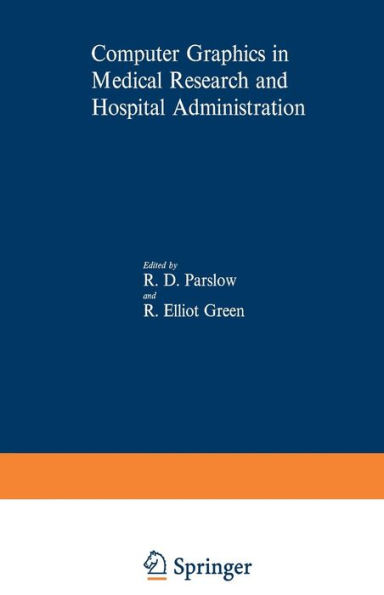Computer Graphics in Medical Research and Hospital Administration
The graphics terminal makes it possible for people who are not computer specialists to communicate with computers on an inter active basis, without the delay or inconvenience of working constantly through an intermediary. It provides a language of shapes or symbols (full graphics) or words and numbers (alphanumerics) which is understood by both man and machine. The visual output and input facility has considerably widened the applications of computers within the medical world, bringing their enormous powers of data handling and simulation to bear on solving problems in adminis tration, patient monitoring and clinical analysis and research. The purpose of this book is to provide examples of the work being carried out now in the U.K. and U.S.A., showing the applications of all types of installations-from small to very complex-for both administrative and research uses. It gives a brief overview of benefits already derived and of future plans; of hardware utilisation and of software approach; of problems met and of problems solved. The intention is to acquaint executives and researchers in all branches of the medical world with the rapid progress being made in computer graphics and to stimulate thought on which way the technique can be developed to the advantage of all.
1004106945
Computer Graphics in Medical Research and Hospital Administration
The graphics terminal makes it possible for people who are not computer specialists to communicate with computers on an inter active basis, without the delay or inconvenience of working constantly through an intermediary. It provides a language of shapes or symbols (full graphics) or words and numbers (alphanumerics) which is understood by both man and machine. The visual output and input facility has considerably widened the applications of computers within the medical world, bringing their enormous powers of data handling and simulation to bear on solving problems in adminis tration, patient monitoring and clinical analysis and research. The purpose of this book is to provide examples of the work being carried out now in the U.K. and U.S.A., showing the applications of all types of installations-from small to very complex-for both administrative and research uses. It gives a brief overview of benefits already derived and of future plans; of hardware utilisation and of software approach; of problems met and of problems solved. The intention is to acquaint executives and researchers in all branches of the medical world with the rapid progress being made in computer graphics and to stimulate thought on which way the technique can be developed to the advantage of all.
54.99
In Stock
5
1

Computer Graphics in Medical Research and Hospital Administration
90
Computer Graphics in Medical Research and Hospital Administration
90Paperback(Softcover reprint of the original 1st ed. 1971)
$54.99
54.99
In Stock

Product Details
| ISBN-13: | 9781461586500 |
|---|---|
| Publisher: | Springer US |
| Publication date: | 02/07/2012 |
| Edition description: | Softcover reprint of the original 1st ed. 1971 |
| Pages: | 90 |
| Product dimensions: | 5.51(w) x 8.50(h) x 0.01(d) |
From the B&N Reads Blog
